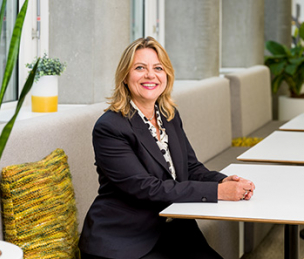Displaying 1 - 10 of 10
-
Karadöller, D. Z., Sumer, B., Ozyurek, A., & Ünal, E. (2021). Producing informative expressions of Left-Right relations: Differences between children and adults in using multimodal encoding strategies. Talk presented at the 15th International Congress for the Study of Child Language (IASCL 2021). online. 2021-07-15 - 2021-07-23.
-
Karadöller, D. Z., Sumer, B., Ünal, E., & Ozyurek, A. (2021). Spatial language use predicts spatial memory of children: Evidence from sign, speech, and speech-plus-gesture. Talk presented at the 43rd Annual Meeting of the Cognitive Science Society (CogSci 2021). online. 2021-07-24 - 2021-07-26.
-
Mamus, E., Speed, L. J., Ozyurek, A., & Majid, A. (2021). Sensory modality of input influences encoding of motion events in speech but not co-speech gestures. Talk presented at the 43rd Annual Meeting of the Cognitive Science Society (CogSci 2021). online. 2021-07-26 - 2021-07-29.
-
Ozyurek, A. (2021). Not only the past but also the future of language is likely to be multimodal [plenary talk]. Talk presented at Protolang 7. (virtual conference). 2021-09-06 - 2021-09-08.
-
Ozyurek, A. (2021). Multimodal approaches to cross-linguistic differences in language structures, processing and acquisition [keynote]. Talk presented at Crosslinguistic Perspectives on Processing and Learning (X-PPL 2021). online. 2021-09-16 - 2021-09-17.
-
Rasenberg, M., Ozyurek, A., Pouw, W., & Dingemanse, M. (2021). The use of multimodal resources for joint meaning-making in conversational repair sequences. Talk presented at the Embodied Cognitive Science (ECogS) Seminar Series. Virtual meeting. 2021-12-10.
-
Rasenberg, M., Ozyurek, A., & Dingemanse, M. (2021). The use of multimodal resources for joint meaning-making in conversational repair sequences. Talk presented at the 5th International Conference on Interactivity, Language & Cognition. Virtual meeting. 2021-09-15 - 2021-09-19.
-
Ozyurek, A. (2011). Language in our hands: The role of the body in language, cognition and communication [Inaugural lecture]. Talk presented at The Radboud University Nijmegen. Nijmegen, The Netherlands. 2011-05-26.
-
Peeters, D., & Ozyurek, A. (2011). Demonstrating the importance of joint attention in the use of demonstratives: The case of Turkish. Poster presented at The 4th Biennial Conference of Experimental Pragmatics [XPRAG 2011], Barcelona, Spain.
-
Brown, A., Ozyurek, A., Allen, S., Kita, S., Ishizuka, T., & Furman, R. (2004). Does event structure influence children's motion event expressions. Poster presented at 29th Boston University Conference on Language Development, Boston.
Abstract
This study focuses on understanding of event structure, in particular therelationship between Manner and Path. Narratives were elicited from twenty 3-year-olds and twenty adults using 6 animated motion events that were divided into two groups based on Goldberg's (1997) distinction between causal (Manner-inherent; e.g. roll down) and non-causal (Manner-incidental; e.g. spin while going up) relationships between Manner and Path. The data revealed that adults and children are sensitive to differences between inherent and incidental Manner. Adults significantly reduced use of canonical syntactic constructions for Manner-incidental events, employing other constructions. Children, however, while significantly reducing use of canonical syntactic constructionsfor Manner-incidental events, did not exploit alternative constructions. Instead, they omitted Manner from their speech altogether. A follow-up lexical task showed that children had knowledge of all omitted Manners. Given that this strategic omission of Manner is not lexically motivated, the results are discussed in relation to implications for pragmatics and memory load.

Share this page